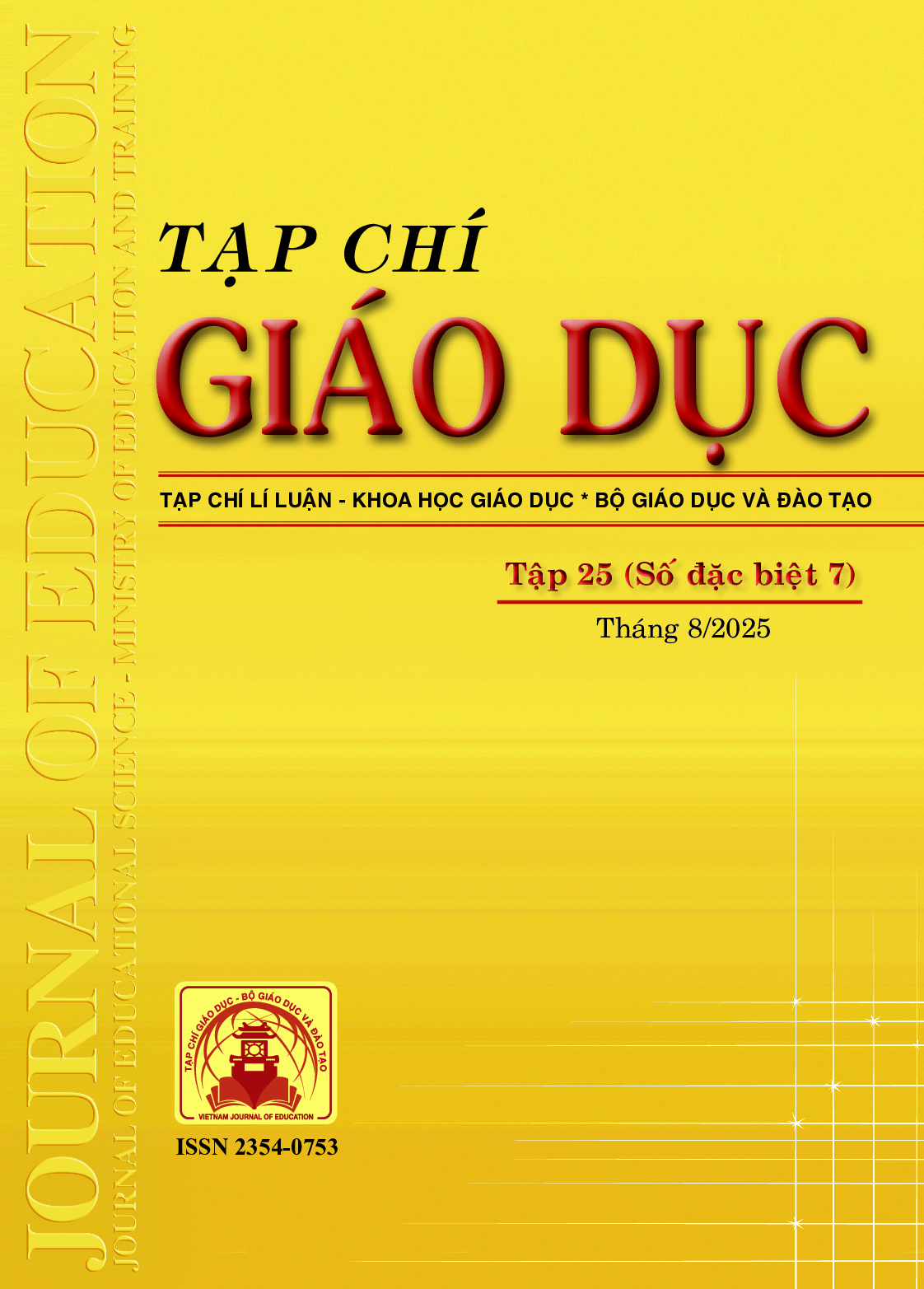Thiết kế bài học tích hợp nội dung phát triển năng lực cảm xúc - xã hội vào môn Giáo dục công dân cấp trung học cơ sở
Tóm tắt
In the context of educational innovation, social-emotional competencies are considered one of the fundamental skills that support students in regulating emotions and behaviors, building positive relationships, and adapting effectively to situations in both learning and life. This study uses methods such as document review, product research, and expert consultation to clarify the theoretical foundations of social-emotional competencies, the relationship between the content of social-emotional competency education and the Civic Education subject at the secondary school level, integration perspectives, and the degree of integration in teaching. The study also proposes a process for designing integrated lessons that incorporate social-emotional competency development content into Civic Education at the secondary school level. Based on this, the author provides an example of designing an integrated lesson: “Coping with Stressful Emotions” for 7th-grade students. The research results are expected to help teachers design integrated lessons, enhance the effectiveness of Civic Education teaching, and develop socialemotional competencies for secondary school students.
Tài liệu tham khảo
Blum, A. (1973). Towards a rationale for integrated science teaching. In P. E. Richmond (Ed.), New trends in integrated science teaching (Vol. 2, pp. 29-51). The UNESCO Press.
Bộ GD-ĐT (2018a). Chương trình giáo dục phổ thông - Chương trình tổng thể (ban hành kèm theo Thông tư số 32/2018/TT-BGDĐT ngày 26/12/2018 của Bộ trưởng Bộ GD-ĐT).
Bộ GD-ĐT (2018b). Chương trình giáo dục phổ thông môn Giáo dục công dân (ban hành kèm theo Thông tư số 32/2018/TT-BGDĐT ngày 26/12/2018 của Bộ trưởng Bộ GD-ĐT).
Collaborative for Academic, Social, and Emotional Learning (CASEL) (2015). CASEL guide: Effective social and emotional learning programs: Secondary school edition.
Drake, S. M., & Reid, J. L. (2020). 21st century competencies in light of the history of integrated curriculum. Frontiers in Education, 5. [https://doi.org/10.3389/feduc.2020.00116](https://doi.org/10.3389/feduc.2020.00116)
Elias, M. J., Zins, J. E., Weissberg, R. P., Frey, K. S., Greenberg, M. T., Haynes, N. M., Kessler, R., Schwab-Stone, M. E., & Shriver, T. P. (1997). Promoting social and emotional learning: Guidelines for educators. Association for Supervision and Curriculum Development.
Fogarty, R. (1991). How go integrate the curricula. Scribd. [https://www.scribd.com/document/446390986/How-to-integrate-the-curricula-Fogarty-1991](https://www.scribd.com/document/446390986/How-to-integrate-the-curricula-Fogarty-1991)
Hayati, W., Rahayu, W., & Sarifah, I. (2023). Development of the social emotional learning questionnaire for students of mathematics education. Proceeding International Seminar of Multicultural Psychology, 2(1). Universitas Negeri Jakarta.
Hurley, M. M. (2001). Reviewing integrated science and mathematics: The search for evidence and definitions from new perspectives. School Science and Mathematics, 101(5), 259-268.
Ngô Minh Oanh (2016). Thực trạng năng lực dạy học tích hợp của giáo viên trung học cơ sở ở các tỉnh khu vực Nam Bộ. Tạp chí Khoa học, Trường Đại học Sư phạm Thành phố Hồ Chí Minh, 82, 13-21.
Park, J., Haddon, A., & Goodman, H. (2004). Emotional Literacy Handbook: Processes, Practices and Resources to Promote Emotional Literacy. Taylor & Francis Group.
Phùng Quý Sơn, Nguyễn Thị Phương Loan, Nguyễn Ngọc Cường (2023). Thực trạng năng lực dạy học tích hợp liên môn của đội ngũ giáo viên trung học cơ sở trên địa bàn tỉnh Lạng Sơn. Tạp chí Khoa học Giáo dục Việt Nam, 19(S1), 93-99. [https://doi.org/10.15625/2615-8957/12320116](https://doi.org/10.15625/2615-8957/12320116)
Salovey, P., & Mayer, J. D. (1990). Emotional intelligence. Imagination, Cognition and Personality, 9, 185-211.
Wallace, J., Sheffield, R., Rénnie, L., & Venville, G. (2007). Looking back, looking forward: Re-searching the conditions for curriculum integration in the middle years of schooling. The Australian Educational Researcher, 34(2), 29-49.
Đã Xuất bản
Cách trích dẫn
Số
Chuyên mục
Giấy phép

Tác phẩm này được cấp phép theo Ghi nhận tác giả của Creative Commons Giấy phép quốc tế 4.0 .












